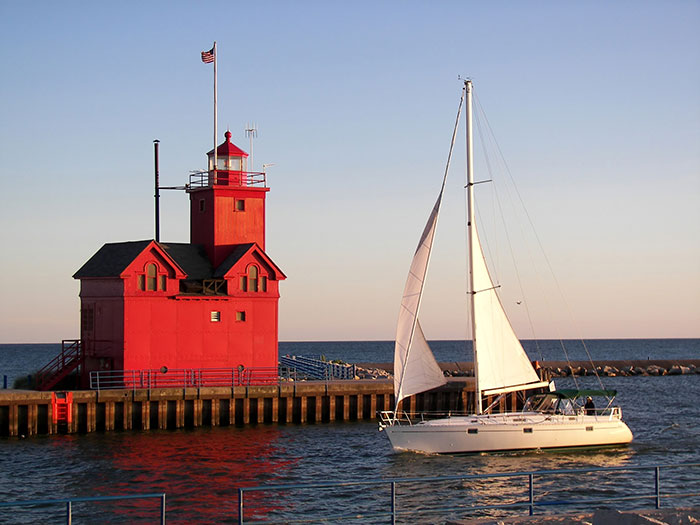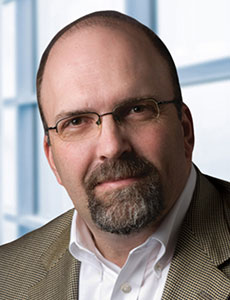Sponsored: Pinnacle Actuarial Resources
A New Safe Harbor Is Empowering Captive Owners To Go It Alone

Risk distribution is a fundamental tenet of insurance.
Underwriting a large number of statistically-independent risks allows insurers to diversify losses and distribute risk across a pool of insureds, minimizing the damaging impact of a large loss from any one policyholder.
“If I insure five buildings, I have way too much volatility; I lose everything if all five burn to the ground. But if I insure 1,000, I decrease that volatility significantly,” said Rob Walling, FCAS, MAAA, CERA, Principal and Consulting Actuary, Pinnacle Actuarial Resources, Inc. “Spreading out the risk is central to successful insurance operations.”
But captives change the equation.
The relationship between insurer and insured as one and the same can make it more difficult for captive owners to effectively distribute risk within their own organizations. In order to successfully mitigate risk and satisfy insurance risk distribution requirements, captive owners have leveraged two primary safe harbors to achieve the level of required risk distribution.
One is the group captive — pooling the risks and resources of multiple insureds under one structure. Combining the exposures of 10 to 15 different companies ensures the loss potential is adequately dispersed.
Reinsurance facilities represent another safe harbor. These involve using reinsurance to pool risks from unrelated third parties. For companies which lack the resources and diversification to be single-parent captive owners, these two structures offer ways to enjoy the flexibility and control of being self-insured by substantially reducing the captive’s risk volatility.
But now a third safe harbor is emerging — one that enables companies with enough statistically-independent risk units to form fully-owned, independent captives without reinsuring unrelated third-party risks based on internal risk distribution. By going solo, more single-parent captives no longer have to assume third-party risk and the uncertainty that comes with it. An independent structure can also be more streamlined and allow for more control.
Setting the Precedent for Risk Units

Rob Walling, FCAS, MAAA, CERA
Principal and Consulting Actuary
To shed group captives or reinsurance pools, companies can demonstrate risk diversification and reduced loss volatility by breaking down their exposures into definable, statistically-independent risk units. The U.S. Tax Court has long been pushing the captive insurance industry to embrace risk units as a way of measuring risk distribution.
Some recent cases show that the industry is finally embracing the idea that a risk unit approach is an effective way for companies to achieve enough internal distribution to form single-parent captives.
In a 2014 decision around Rent-A-Center, Inc. (RAC) and Affiliated Subsidiaries v. Commissioner, the Tax Court determined that the number of insured parties was less important than the number of discrete risk units covered by a captive.
The Court found that “RAC’s subsidiaries owned between 2,623 and 3,081 stores; had between 14,300 and 19,740 employees; and operated between 7,143 and 8,027 insured vehicles. RAC’s subsidiaries operated stores in all 50 states, the District of Columbia, Puerto Rico and Canada. RAC’s subsidiaries had a sufficient number of statistically-independent risks.”
“In several captive insurance decisions since 1991, tax courts have said: Stop worrying about corporate structure and retention of unrelated risk. Pay more attention to internal unrelated risk units,” Walling said. “It came to a crescendo in the Rent-A-Center case, where the argument was stated most directly and most loudly.”
“We are seeing more and more medium to large businesses pursue captive formations without reinsurance facilities. Reinsurance pooling structures are facing increased scrutiny, and satisfying risk distribution internally can be a viable alternative,” Walling said.
Measuring Risk Distribution
There is currently no clear-cut way for companies to determine how many independent risk units will satisfy risk distribution and reduce volatility sufficiently to justify a single-parent structure.
“No test exists that says 50 trucks is enough, but 25 isn’t. Five thousand customers are enough, but 2,000 are not,” Walling said. “This is becoming a real challenge.”
Pinnacle developed a methodology called Expected Adverse Deviation (EAD) to determine how much of the volatility associated with any individual risk unit is diversified away by the insurance program overall. EAD refers to the average amount of loss that an insurance company incurs when losses are greater than expected.
“EAD is computed using a stochastic simulation model based on the anticipated claim frequencies and severities for the captive,” Walling said.
The ratio of expected adverse loss to expected loss indicates how much volatility or “down-side” risk an insurance program is taking on. The higher the EAD ratio, the greater the loss volatility. Conversely, the lower the EAD ratio, the more risk distribution.
“The idea is to focus on the units of risk that matter for each line of coverage,” Walling said. “If we’re dealing with workers’ compensation, then we focus on payroll or number of employees. For commercial auto coverage, it’s the number of vehicles. For a hospital’s professional liability, it may be number of beds and/or doctors.”
Companies can then use their EAD ratio to determine how many of those risk units their captive needs to reduce volatility to a level at which forming a single-parent captive would be prudent and acceptable. It provides an actuarial standard to assess whether there is sufficient internal risk distribution.
Pinnacle’s actuarial team has also computed the EAD results of existing group captives or reinsurance facilities to evaluate the results of EAD in relation to existing risk distribution safe harbors.
“The goal of the EAD model is to recognize that each insurance coverage has its own exposure and measure how that mitigates risk in a captive insurance company,” Walling said.
Leaders in Captive Risk
Pinnacle’s new methodology grew out of its work in captive funding studies, which it has performed for decades. The company focuses exclusively on property/casualty risks, and is among the largest independent P/C actuarial firms in the U.S.
Two-thirds of its client base are captives and other alternative structures like risk retention groups and self-insurance pools. It’s also heavily involved in captive regulatory work and works frequently with state insurance departments.
The Expected Adverse Deviation model demonstrates Pinnacle’s key areas of expertise: the actuarial science of measuring risk, the U.S. tax code, and the regulatory parameters set around captive solutions.
That expertise is also demonstrated through its actuarial consultants’ dedication to educating and advocating for the captive industry. With more than 30 consultants and credentialed actuaries participating in more than 50 industry events each year, Pinnacle’s team takes pride in providing thought leadership and fueling innovative solutions.
“We have a group of very talented actuaries writing thoughtful articles, speaking from prominent podiums and serving amazing clients,” Walling said. “We take the idea of supporting our industry quite seriously.”
To learn more about Pinnacle Actuarial Resources, visit https://www.pinnacleactuaries.com/.
This article was produced by the R&I Brand Studio, a unit of the advertising department of Risk & Insurance, in collaboration with Pinnacle Actuarial Resources, Inc. The editorial staff of Risk & Insurance had no role in its preparation.










